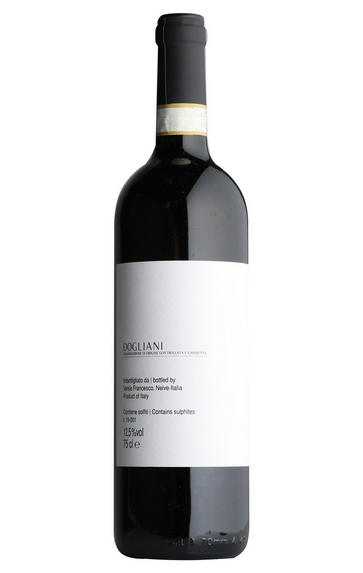
About this WINE
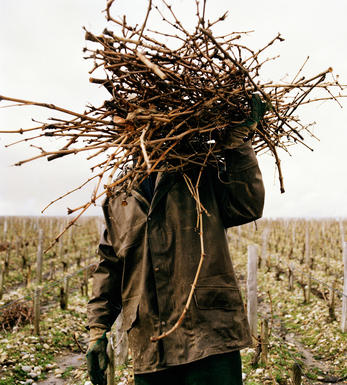
Francesco Versio
Ambitious, tireless, and naturally gifted, Francesco graduated in 2009 from Turin University, specialising in viticulture and viniculture. He worked briefly at Terre del Barolo in the heart of Barolo Cannubi, before joining Bruno Giacosa as cellar hand. Testament to Francesco’s sensitivity and strength as a winemaker, he was promoted to winemaker in June 2011; rarely is such a prominent position held by such a young talent. Francesco left in 2017 and is now head winemaker at Figli Luigi Oddero.
Alongside his day job, since 2013 Francesco makes tiny quantities of his own wines from his family’s small vineyard holding in his hometown Neive. Here, they have two small plots of old vines: San Cristoforo and Currà, facing southwest overlooking the village of Barbaresco.
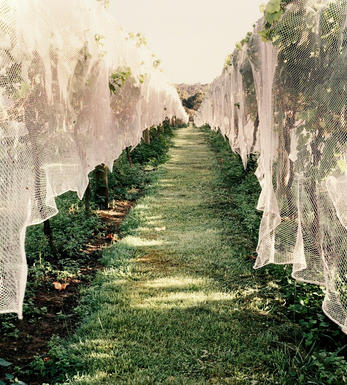
Dolcetto di Dogliani
Dolcetto di Dogliani is a red wine produced in the Dogliani region of Piedmont, Italy, specifically in the Langhe hills. It is made primarily from the Dolcetto grape variety, which is indigenous to the area. Dolcetto di Dogliani is distinct from other Dolcetto wines due to its stricter production regulations and its reputation for higher quality.
The name "Dolcetto" translates to "little sweet one" in Italian, although the wines produced from this grape are typically dry rather than sweet. Dolcetto di Dogliani wines are known for their deep purple color, medium body, and vibrant acidity. They often exhibit flavours of dark berries, such as blackberry and plum, along with hints of spice and earthiness.
While Dolcetto di Dogliani wines are generally meant to be consumed young to enjoy their fresh fruitiness, some producers also make more structured and age-worthy versions. These wines can offer greater complexity and depth with a few years of ageing.
Dolcetto di Dogliani pairs well with a variety of foods, including pasta dishes, risotto, roasted meats, and aged cheeses. Its versatility, approachability, and affordability make it a popular choice among both wine enthusiasts and casual drinkers alike.
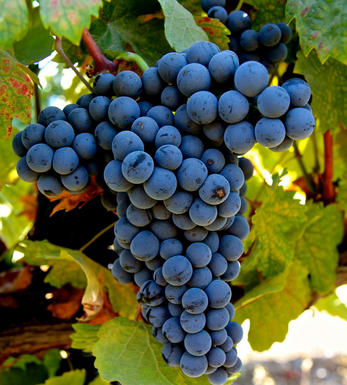
Dolcetto
A native black grape variety of Northern Italy grown almost exclusively in the provinces of Cuneo and Alessandria in Piedmont. It is relatively easy to cultivate, although it is susceptible to fungal diseases. It ripens before Barbera and Nebbiolo and is often grown in high north-facing sites which would be unsuitable for Nebbiolo.
The finest Dolcetto wines come from grapes grown on soils rich with white marls, especially those found on the right bank of the River Tauro. The wines generally are low in tannins and acidity and are usually fruity and fragrant, often with hints of almonds. Most Dolcettos should be drunk within a year or two of the vintage, but the wines from the best producers can last for 5 years and sometimes longer.


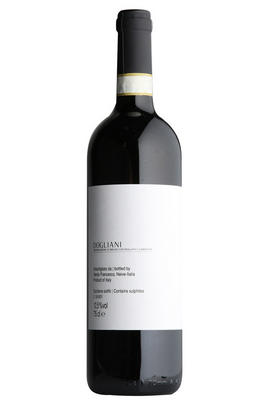
Buying options
Add to wishlist
Description
The 2022 Dogliani is an incredibly fine example of Dolcetto, considered by many Piedmontese as their drink of choice. There’s an enticing bouquet of violets, roses and hints of black pepper. On the palate, there is just so much vibrancy of fruit with soft tannins alongside persistent notes of juicy blackberry, red plum, and floral complexity. The fruit here is exceptionally well-defined, with a lovely freshness and an impressive finish. The joy of this wine is its approachability and ease of drinking; it is one to enjoy in its youth whilst the more heavy-duty Barbaresco’s are ageing.
Drink 2023 - 2028
Hugo Dale, Account Manager, Berry Bros. & Rudd
The Dogliani zone on the edge of the Barolo area makes the world’s finest expressions of the Dolcetto grape; Francesco’s is up there with the best. This wine comes from east-facing, 25-year-old vines planted on white limestone soils at a cool 500-metre altitude. It’s undergone a short maceration, with only steel used, to retain the grape’s primary-fruit vibrancy and the stunning vineyard’s mineral zip. It offers notes of blackberry, pepper, violet and earthy spice, with bags of energy.
Drink 2023 - 2030
Davy Żyw, Senior Buyer, Berry Bros. & Rudd
wine at a glance
Delivery and quality guarantee